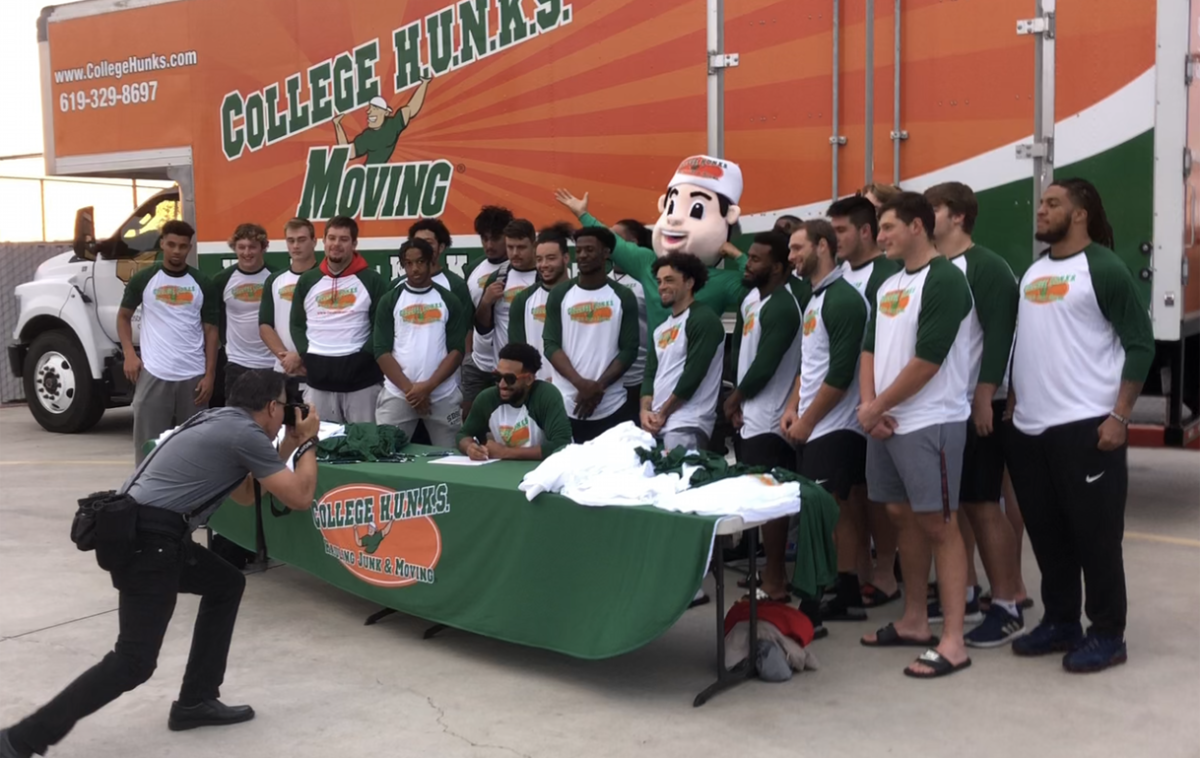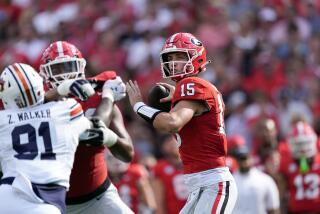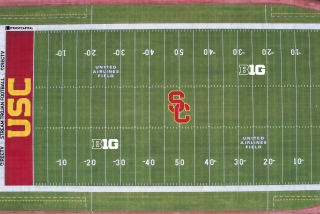Op-Ed: College athletes are cashing in, and it’s going better than many feared

- Share via
We didn’t quite see this coming. Before the NCAA began to allow endorsement deals this summer, many people in the industry assumed that high-profile male athletes from major programs would be the prime beneficiaries, but the impact has been much broader.
Maxim Bets offered a deal to every female student athlete in Colorado over the age of 21. Sixty football players at San Diego State signed with a moving company called College Hunks Hauling Junk & Moving. Deals for “name, image and likeness” have even spread to high school players. This fall, 17-year-old basketball player Mikey Williams, represented by a marketing agent, signed a pact with Puma to promote its apparel and shoes.
The NCAA has allowed endorsement deals only since July 1, and as an agent I’ve never seen such a rapid transformation as the switch from strict amateurism to athletic empowerment. There are certainly risks to allowing college athletes to hire marketing agents and sign commercial deals, but it is a long overdue change for the better.
For years many athletes from less affluent backgrounds have sent part of their scholarship check home to their families and tried to get by on very little. Unlike their peers, athletes could not work to supplement their income. Those at schools in expensive areas, like USC and UCLA, found the cost of housing, transportation and food more than they could handle. Meanwhile they saw the packed stadiums and arenas, read about lucrative television contracts and saw their jersey number sold in the student store — all enriching the university and its business partners, but not the player.
Under the old system many athletes still found ways to get around NCAA regulations, by taking under-the-table payments from agents and alums. Others left college without graduating, to pursue a career in professional leagues.
The hope now is that student athletes will feel less pressure to jump early to the pros, if they can cash in on their brand while remaining in school.
Since the rule change, there have been thousands of deals made by athletes and companies across the country. It’s not just the high-profile, like Alabama’s first-year starting quarterback Bryce Young, whose coach announced that multiple deals had netted the player almost seven figures. It’s also not just men who are benefiting. Athletes at the University of Texas have signed more than 175 deals, including 33 for softball players and 17 for volleyball players. Phil Knight, co-founder of Nike, joined with other University of Oregon boosters to create a company to help any student athlete at the school capitalize on name, image and likeness revenue.
Some companies are winning publicity just for how they’re choosing student athletes. Jack in the Box is giving $5,000, as well as $500 in food credits, to a handful of college athletes with some variation of “Jack” in their name. Sam’s Club is picking 10 student athletes named Sam to receive $10,000 each.
The cash is being spread around more widely than expected, but there’s still a risk of disparities causing trouble. If a college quarterback is making millions while the athlete blocking for him has no deals, this undercuts the concept of team.
Another risk is that athletes who have signed deals early in their career can face daunting expectations from fans. Athletes may need time to develop their skills, and underperformance invites ridicule. Already, the combination of team commitments and school can be challenging for young athletes. Adding marketing activity to the mix will be tough. The new currency is the number of followers an athlete has on platforms like Instagram, TikTok and Twitter. Building that audience takes time and attention.
The timetable for recruitment of athletes by agents has moved earlier in a dramatic way. Most marketing agents also represent professional players for contract negotiations. If an agent loses out on undergrad marketing rights as the player comes out of high school, they fear never getting a chance to represent the player at all. Parents of high school athletes will need to assume a protective role on agent selection.
Finally, although there may be less chance now of under-the-table payments, booster money may yet shape college athletics in another way as wealthy alumni use their businesses to make name, image and likeness deals with certain players, giving those schools an advantage and also potentially distorting decisions by the program and the coach.
There’s a lot yet to work out in this new era, but the early results are encouraging. We haven’t seen the concentration of deals that many feared, and that means more student athletes will have a chance to reap some rewards while also completing their degrees.
Leigh Steinberg is a sports agent, philanthropist and author.
More to Read
A cure for the common opinion
Get thought-provoking perspectives with our weekly newsletter.
You may occasionally receive promotional content from the Los Angeles Times.










